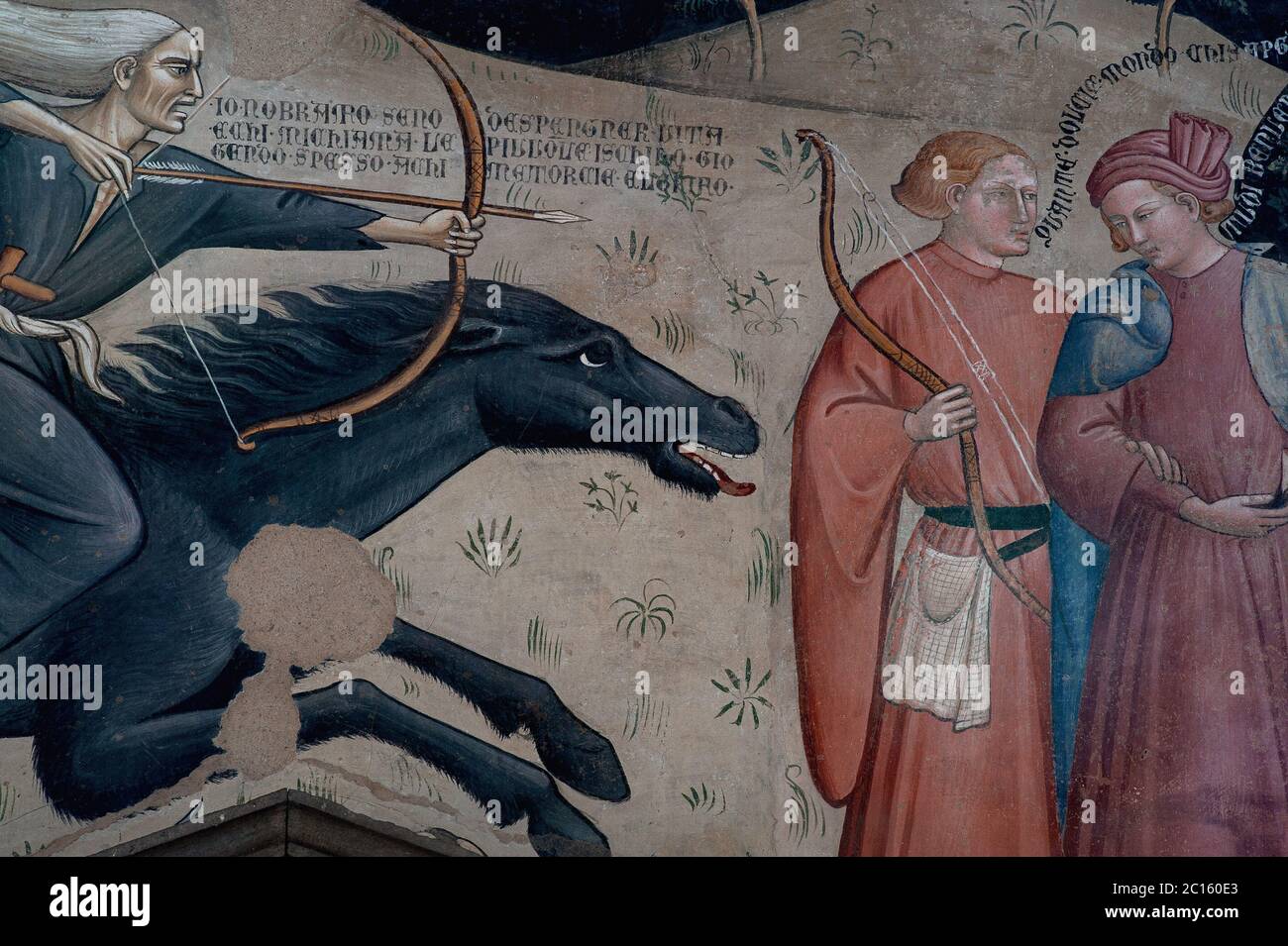The Grim Reaper, riding bareback on a black horse, represents the Black Death plague pandemic sweeping across 1300s Europe as he aims an arrow at two unsuspecting huntsmen of noble birth. Triumph of Death fresco, painted in around 1380, by Sienese painter Bartolo di Fredi (c. 1330-1410). In the Chiesa di San Francesco at Lucignano, Tuscany, Italy.

Image details
Contributor:
Terence Kerr / Alamy Stock PhotoImage ID:
2C160E3File size:
34.5 MB (3.3 MB Compressed download)Releases:
Model - no | Property - noDo I need a release?Dimensions:
4256 x 2832 px | 36 x 24 cm | 14.2 x 9.4 inches | 300dpiDate taken:
5 August 2011Location:
Chiesa di San Francesco, Piazza Tribunale, Lucignano, Val di Chiana, Tuscany, ItalyMore information:
This image could have imperfections as it’s either historical or reportage.
Lucignano, Val di Chiana, Tuscany, Italy: detail of The Triumph of Death, a powerfully expressive fresco painted around 1380 by Sienese artist Bartolo di Fredi in the Chiesa di San Francesco, the 13th century Franciscan church in the central Piazza del Tribunale of this medieval walled town. Bartolo di Fredi (c. 1330-1410) visualised the black-clad Grim Reaper with clawed hands and feet, riding bareback with a scythe swinging from his belt while grasping a longbow, and with his long white hair streaming out behind him. In this detail of the complete composition, the black charger gallops towards two conversing huntsmen of noble birth, both unaware that at least one of them is about to be struck by Death’s arrow. Triumph of Death artworks appeared in many Franciscan churches during the 14th century as the Black Death Plague pandemic swept across Western Europe. The complete fresco at Lucignano depicts Christ overhead, directing the viewer to the allegorical scene below, in which Death rides over the bodies of people who have already succumbed. Behind him, paupers and cripples beg for release from their miserable lives. Bartolo di Fredi, also known as Bartolo Battiloro, was born in Siena and became one of the most influential artists of the Sienese School, maintaining a large studio there. He helped to decorate Siena’s town hall and cathedral, painted Old Testament frescoes in the Collegiata church at San Gimignano, and in 1382, shortly after working at Lucignano, executed the Descent from the Cross in the Franciscan sacristy at Montalcino. Surviving works by Bartolo are now preserved in art galleries and museums worldwide, including the Louvre in Paris, France, and in US cities such as New York, Los Angeles, Boston and Honolulu. D0687.A8221